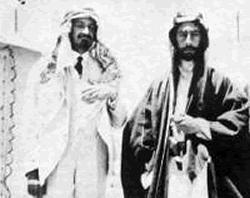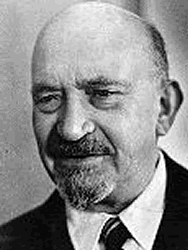(1874-1952)
New York Passenger Lists, 1820-1957
about Chaim Weizmann
Name: Chaim Weizmann
Arrival Date: 9 Oct 1947
Estimated Birth Year: abt 1875
Age: 72
Gender: Male
Port of Departure: Southampton, England
Ethnicity/Race/Nationality: Russian
Ship Name: Queen Mary
Port of Arrival: New York, New York
Nativity: Russia
Line: 6
Microfilm Serial: T715
Microfilm Roll: T715_7483
Birth Location: Russia
Birth Location Other: motol
Page Number:
127
with wife; Vera Rebbeca who was born in Rostov on the Don
Name: Chaim Weizmann
Arrival Date: 2 Apr 1921
Estimated Birth Year: abt 1875
Age: 46
chemist
Male
Port of Departure: Plymouth
Ethnicity/Race/Nationality: Hebrew
Ship Name: Rotterdam
Search Ship Database:
Port of Arrival: New York, New York
Nativity: Russia
Line: 13
Microfilm Serial: T715
Microfilm Roll: T715_2945
Birth Location: Russia
Birth Location Other: pinsk
Page Number: 14
Chaim Weizmann was born in Motol, Russia in 1874. The small village of Motol (Motyli, now Motal') near Pinsk (Russian Empire, now in Belarus). He graduated the University of Fribourg in Switzerland in 1899 with a degree in chemistry. He lectured in chemistry at the University of Geneva (1901-3) and later taught at the University of Manchester.
He became a British subject in 1910, and in World War I he was (1916-19) director of the British Admiralty laboratories. He became famous while as a lecturer at Manchester he discovered how to use bacterial fermentation to produce large quantities of desired substances. He is considered to be the father of industrial fermentation. He used the bacterium Clostridium acetobutylicum (the Weizmann organism) to produce acetone. Acetone was used in the manufacture of cordite explosive propellants critical to the Allied war effort (see Royal Navy Cordite Factory, Holton Heath). Weizmann transferred the rights to the manufacture of acetone to the Commercial Solvents Corporation in exchange for royalties.[1]
Zionist political leader
Weizmann missed the first Zionist conference, held in 1897 in Basel, Switzerland, because of travel problems, but he attended each one thereafter. In 1902, he broke with Theodor Herzl and founded the Democratic Zionist Party. Beginning in 1903, he lobbied for the founding of the Hebrew University, a proposal which was adopted by the 11th World Zionist Conference in 1913. In 1904, Weizmann became a chemistry professor at the University of Manchester and soon became a leader among British Zionists. At that time, Prime Minister Arthur Balfour was a Conservative M.P. with a seat in Manchester, and the two met during one of Balfour's electoral campaigns. Balfour supported the concept of a Jewish state, but felt that there would be more support among politicians for a homeland in Uganda. Weizmann was credited later with persuading Balfour that the state should be established in the Jewish traditional land of Palestine [2] Weizmann first visited Jerusalem in 1907, and while there, he helped organize the Palestine Land Development Company as a practical means of pursuing the Zionist dream.
In 1917, he worked with Arthur Balfour to obtain the milestone Balfour Declaration, stating that the British government "views with favour the establishment in Palestine of a national home for the Jewish people". A founder of so-called synthetic Zionism, Weizmann supported grass-roots colonization efforts as well as higher-level diplomatic activity. Siding with neither Labour Zionism on the left nor Revisionist Zionism on the right, Weizmann was generally associated with the centrist General Zionists.

1918. Emir Feisal I and Chaim Weizmann (left, also wearing Arab dress as a sign of friendship)
On January 3, 1919, he and the future King Faisal I of Iraq signed the Faisal-Weizmann Agreement establishing relations between Arabs and Jews in the Middle East. After 1920, he assumed leadership in the world Zionist movement, serving twice (1920-31, 1935-46) as president of the World Zionist Organization. In 1921, Weizmann went along with Albert Einstein for a fund-raiser to establish the Hebrew University in Jerusalem.
Concurrently, Weizmann devoted himself to the establishment of a scientific institute for basic research in the vicinity of his sprawling estate, in the town of Rehovot. Weizmann saw great promise in science as a means to bring peace and prosperity to the area. As stated in his own words :
"I trust and feel sure in my heart that science will bring to this land both peace and a renewal of its youth, creating here the springs of a new spiritual and material life. [...] I speak of both science for its own sake and science as a means to an end." [3]
His efforts led in 1934 to the creation of the Daniel Sieff Research Institute, that was financially supported by an endowment by the Baron Israel Sieff in memory of his late son. Weizmann actively conducted research in the laboratories of this institute, primarily in the field of organic chemistry. In 1949 the Sieff Institute was renamed the Weizmann Institute of Science in his honor. Weizmann's success as a scientist and the success of the Institute he founded make him an iconic figure in the heritage of the Israeli scientific community today.
In 1936 he addressed the Peel Commission, set up by Stanley Baldwin, whose job it was to consider the working of the British Mandate of Palestine. The Commission published a report that, for the first time, recommended partition, but the proposal was declared unworkable and formally rejected by the government.
During World War II, he was an honorary adviser to the British Ministry of Supply and did research on synthetic rubber and high-octane gasoline. (Formerly Allied-controlled sources of rubber were largely inaccessible owing to Japanese occupation during World War II, giving rise to heightened interest in such innovations). Tragedy struck when his younger son Flight Lt [4] Michael Oser Weizmann, serving as a pilot in the British Royal Air Force, was killed when his plane was shot down over the Bay of Biscay.
He met with United States President Harry Truman and worked to obtain the support of the United States for the establishment of the State of Israel. Weizmann became the first President of Israel in 1949. His nephew Ezer Weizman also became president of Israel. He is buried beside his wife, Vera, on the Weizmann estate, which is located on the grounds of Israel's premier science research institute, The Weizmann Institute of Science.
Published work
* Chaim Weizmann (1949). Trial and Error: The Autobiography of Chaim Weizmann. Jewish Publication Society of America.
